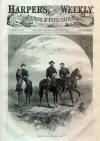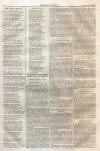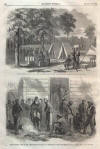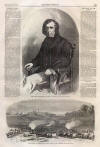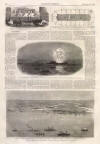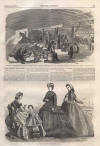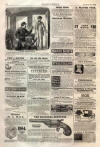1800's Women Clothes
|
|
This Site:
|
OCTOBER 29, 1864.] HARPER'S WEEKLY. 701 RICHMOND REFUGEES ON BOARD THE UNITED STATES SANITARY COMMISSION BOAT, AT CITY POINT, VIRGINIA.—SKETCHED BY J. R. HAMILTON.—[SEE PAGE 700.]PARIS FASHIONS FOR OCTOBER.IN regard to the Paris Fashions for October we have just to observe that, for finishing up the fine season out of town, the dress bonnet is not at all de monde, especially if the lady be young. The new casquette (shown in our last month's engraving of the fashions) and the Windsor hat with feathers are the two varieties of fancy chapeaux most in vogue. For toilette de ville, however, the ordinary bonnet is necessary, and should be of the shape indicated in our fourth illustration. It may be of any color, but is usually of white muslin, orna mented with black beads or velvets, and rests closely to the head. In all probability, however, this shape, as well as the material, will undergo considerable modifications at the approach of the winter season. The predominant color for dresses still continues to be white, or the lighter tints of the colors for which the summer of 1864 has been remarkable. For colored silks of darker hues, and especially for foulard dresses, straw ornaments have been applied with advantage ; and these have the double merit of originality and cheapness, two qualities some what rare in this age of imitative ostentation, for the gratification of which the most extravagant sacrifices are so frequently made. THE ILLUSTRATIONS.Fig. 1. Evening Dress.—Robe of white alpaca, ornamented with black lace insertion, surrounded by bouclettes of black velvet ; the vest is similarly ornamented. Muslin chemisette, with collar and cuffs of embroidered muslin. The head-dress is composed of a wide entredeux, trimmed with narrow guipure over rose colored silk, terminated by a rose colored silk bow and ends. Fig, 2. Dress ,for a Little Toy.--Low-necked nankeen blouse, trimmed with black worsted braid ; the rounded teeth on the edge of the shirt are bordered with black binding. Wide sleeves, with a band descending from the shoulder scarfwise, and attached at the waist. Fig. 3. Dress for a Young Lady.—Checkered gray foulard robe, trimmed round the edge of the skirt with vandyke blue ribbon, surmounted by three narrow bands of blue silk. Muslin canezou, pointed in front, plaited throughout the corsage, and ornamented with narrow strips of blue velvet. The bonnet, of the latest shape, is in tulle bouillonne, the curtain being replaced by a garland of blue flowers hanging over a narrow white lace that partly covers the catogan. Fig. 4. Walking Dress.—Lilac foulard robe, trimmed, as shown in the illustration, with mauve-colored silk edged with black silk guipure. Small upright collar, fastened by a rose-colored cravat. Chapeau Windsor, ornamented with white feather in front, and another large feather falling over the hinder portion of the Tuscan hat. PARIS FASHIONS FOR OCTOBER, 1864. 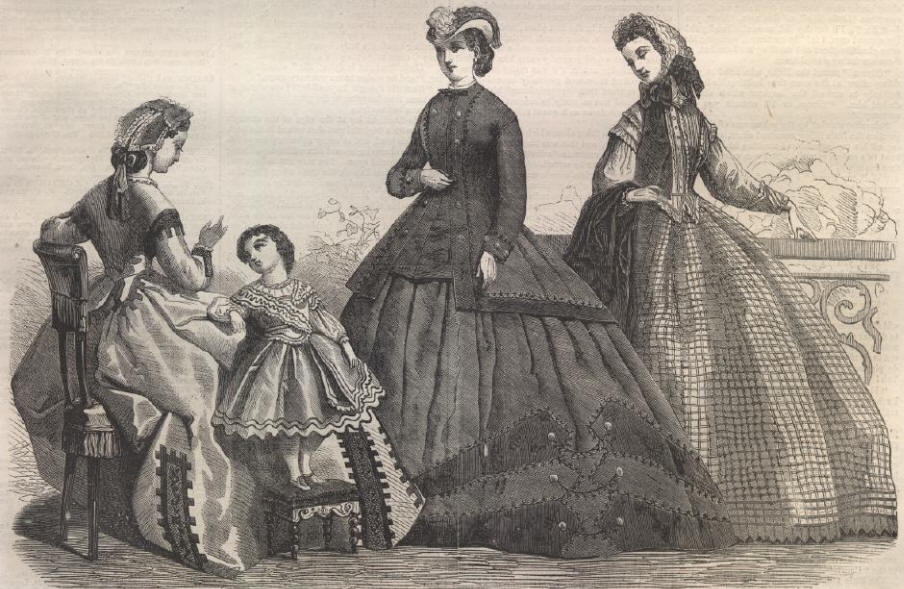 |
||||||||||||||||||||||
|
|
||
|
|
Site Copyright 2003-2018 Son of the South. For Questions or comments about this collection, contact paul@sonofthesouth.net |
|
|
Are you Scared and Confused? Read My Snake Story, a story of hope and encouragement, to help you face your fears. |
||
